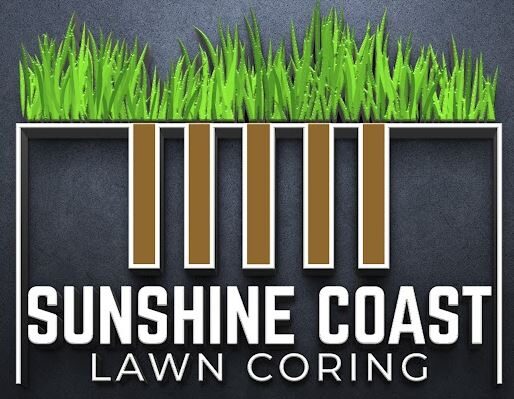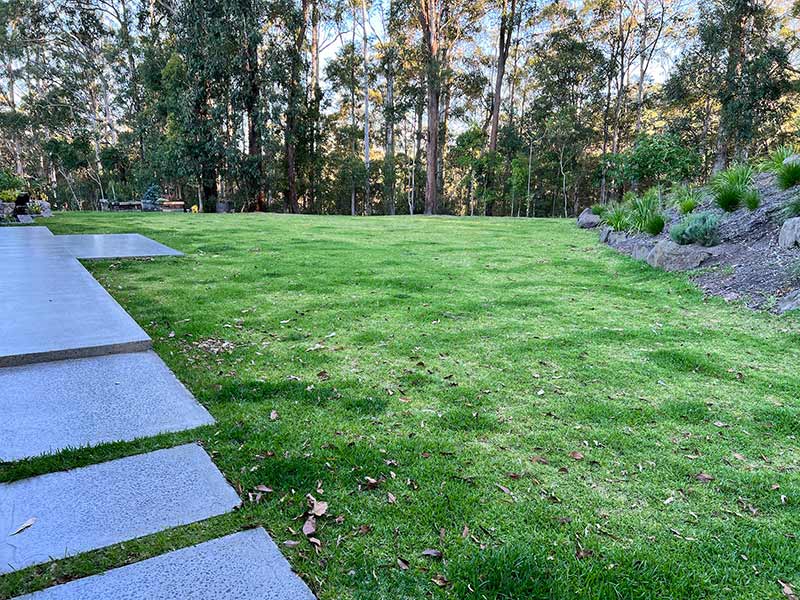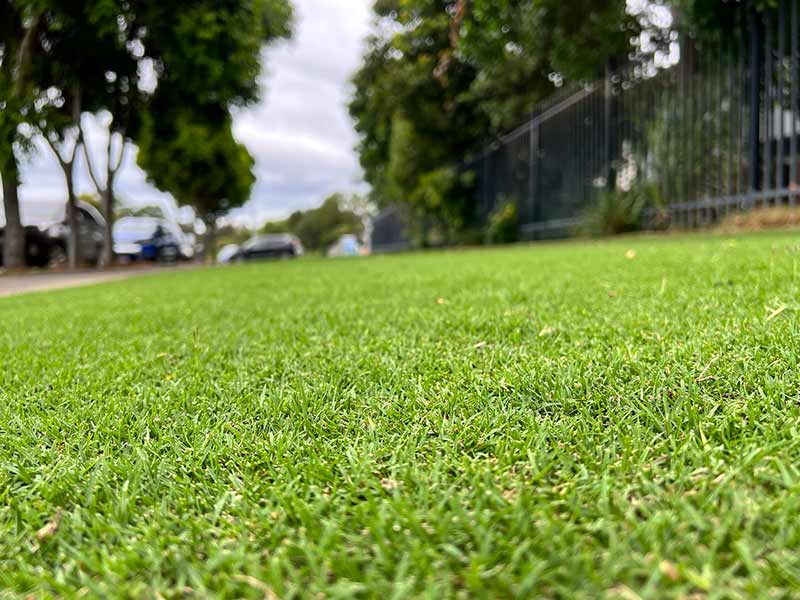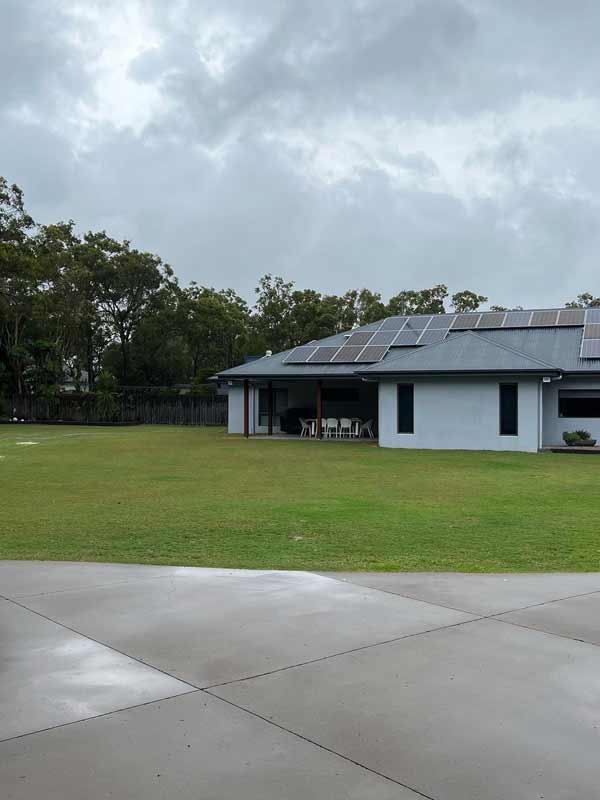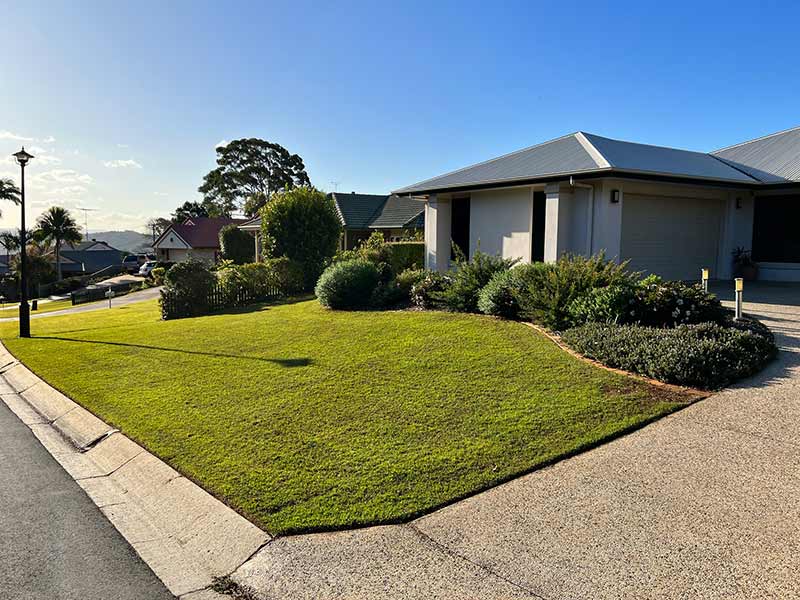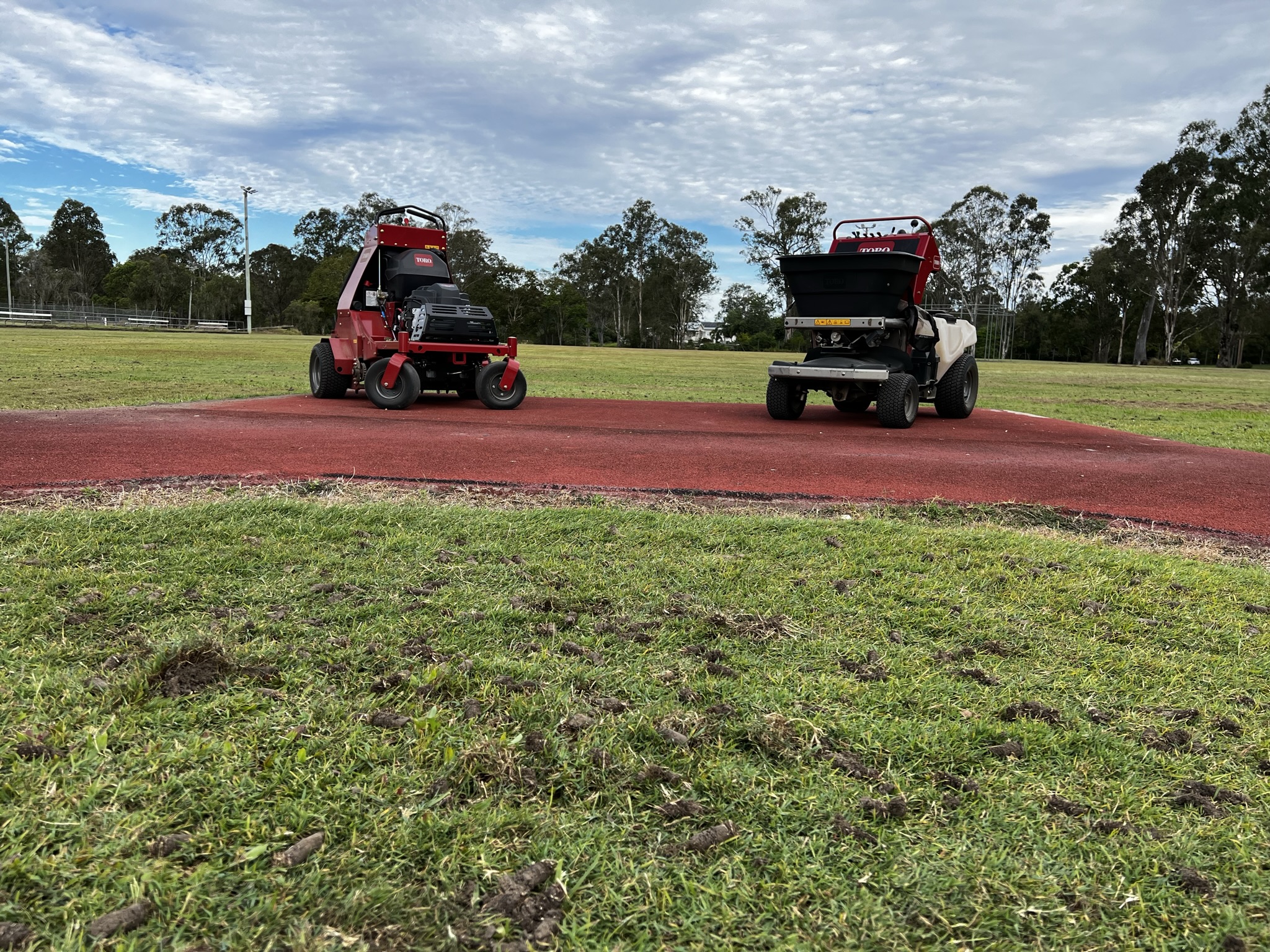Lawn Renovation and Repairs
Sunshine Coast Lawn Coring can help you make your lawns look amazing with our lawn renovation and repair service. Make your lawn stand out in your neighbourhood.
Lawn renovations sunshine coast
If you’re looking to have your lawn looking brand new, better than freshly laid turf, then you’ve come to the right place. In this article, we’ll be discussing the process of lawn renovation, which covers multiple visits from the first visit fertilizing the lawn to two weeks after for another fertiliser “recovery” treatment.
So, let’s dive in and explore how lawn renovations can help you achieve the lawn of your dreams.
Step 1: Fertilizing the Lawn The first step in lawn renovation is fertilizing the lawn. This is done to provide the necessary nutrients for the grass to grow strong and healthy. During the first visit, we will apply a high-quality fertiliser to the lawn. The type of fertiliser will depend on the soil condition, the type of grass, and the climate in your area.

Step 2: Dethatching and Scalping the Lawn After about a week, we will come back to dethatch and scalp the lawn. This process involves removing the thatch layer, which is the layer of dead grass, leaves, and other organic matter that accumulates on top of the soil over time. Thatch can prevent water, nutrients, and air from reaching the roots of the grass, which can lead to a weak and unhealthy lawn.
Scalping the lawn involves mowing it very short, which allows sunlight and air to reach the soil and stimulates new growth. This step can be stressful for the grass, but it’s an essential part of the renovation process.

Step 3: Aerate the Lawn The next step is to aerate the lawn, which involves creating small holes in the soil to allow air, water, and nutrients to reach the roots of the grass. Aeration can also help to break up compacted soil and improve drainage. This step is especially important if your lawn gets a lot of foot traffic or if the soil is heavy.
Step 4: Apply Soil Conditioners, Pre-Emergent, and Lawn Grub Control Depending on the condition of the soil, we may need to apply soil conditioners to improve its quality. Soil conditioners can help to balance the pH levels, increase water retention, and reduce soil compaction.
We may also need to apply pre-emergent to prevent weeds from growing in your lawn. This is done to ensure that the grass has enough space and nutrients to grow strong and healthy.
Finally, we may need to apply lawn grub control to protect your lawn from pests that can damage the grass roots.
Step 5: Apply Fertilizer “Recovery” Treatment About two weeks after the first visit, we’ll come back for another fertilizer “recovery” treatment. This is done to provide the grass with the necessary nutrients to recover from the renovation process and grow strong and healthy.
In conclusion, lawn renovation is an essential process for achieving a healthy and beautiful lawn. With the right approach, it can have your lawn looking brand new, better than freshly laid turf. If you’re interested in having your lawn renovated, be sure to contact a professional lawn care service to help you get started.
If you are considering a lawn renovation please consider you keep up:
- Fertilising Schedule
- Mowing Frequency
- Weed Spraying
- Weed and Grub Prevention
- Watering schedule
Anything outside this basic maintenance will result in your lawn returning to where it began prior to your renovation.
Lawn repair sunshine coast
What is a lawn Repair?
A lawn repair is a process of revitalizing a lawn that is struggling due to thatch and weed problems, while still having a good amount of healthy grass growth. Thatch is a layer of dead grass, roots, and other organic material that accumulates on top of the soil, preventing water, nutrients, and air from reaching the roots of the grass.
Weeds, on the other hand, are unwanted plants that can invade a lawn and compete with the grass for resources. They can be broadleaf weeds like dandelions and clover or grassy weeds like crabgrass.
To repair a lawn, the first step is to assess the extent of the thatch and weed problem. If the thatch layer is too thick, it may need to be removed through a process called dethatching or core aeration. This involves mechanically removing or creating holes in the thatch layer to allow water, air, and nutrients to reach the grass roots.
Once the thatch layer has been addressed, the next step is to apply fertilizer to help the grass grow strong and healthy. The type of fertilizer used will depend on the specific needs of the grass and soil, such as a high-nitrogen fertilizer to promote growth or a slow-release fertilizer to provide long-lasting nutrients.
To control the weeds, a combination of herbicides and manual removal may be necessary. Herbicides can be applied to kill off broadleaf or grassy weeds, while manual removal involves pulling weeds by hand or using a weeding tool.
It’s important to note that lawn repair may require multiple applications of fertilizer and herbicides over a period of time to achieve full coverage and eliminate all weed and foreign grass varieties. Once the lawn has been restored to a healthy state,
For more information or to organise a quote for your project please get in touch with us.
Lawn Renovation & Repair FAQ's
You may have noticed your lawn has a build-up of dead organic matter, excessive roots and stems that have developed within the profile of your grass. This is a natural process caused by your lawn producing more organic matter than what can be broken down. Some turf varieties will thatch more than others and overtime the height of your lawn can increase and can become quite unsightly.
Dethatching will help to remove this layer so that air and nutrients are able to reach your soil base and can more effectively feed your lawn. Reducing thatch also prevents water log in your roots and allows proper drainage, this will help to prevent the risk of fungal issues.
A lawn that is thick and spongy is due to a high thatch layer, the turf when it was installed use to be on the ground level and can eventually be 3-4” higher, with dead organics sitting between the healthy grass and the soil it is just creating problems for your lawn, and needs to be treated.
Depending on the amount of grass present and weeds we need to control it can take a season or 2 of good Maintaince, its best to get on top of all the problems with the lawn as we only have about 6 months a year to get as much as we can to recover prior to heading into winter where to lawn goes dormant.
Generally you will see some recovery from the Renovation within about 2 weeks for full recovery in less than 3 months, providing you with grass looking better than new turf. If there were areas of weeds prior these areas will take longer to recover.
Topdressing is a very labor intensive task, you may have thought to get a excavator in or bobcat to spread topsoil which is doing you more of a dis-service than doing it manually, we are trying to reduce compaction over your lawn so it’s best for manual methods using a wheel barrow or a top soil spreader with low ground weight be the best option when top soiling your yard, although its not the cheapest, your lawn will thank you.
It is recommended to top dress more frequently with a dusting over areas that need repair than large amounts at once as it will take longer for the grass to recover and higher chance of run off when rain is present due to the substrate in ability to stay where it is with minimal roots preventing the erosion
- Changing the soil profile
With Soils that are highly organic, it is best to top dress with a sand to increase the drainage effect on the lawn, With a soils that have high sand content which struggles to hold nutrients or water, a top dress mix of 50/50 sand soil or soil can be added for its nutrient and water retention properties. It is important to lawn core prior as this is a great time to introduce new material to the soil profile underneath. - Chasing a level lawn
If your soil has a great draining profile that holds nutrients and moisture well, it’s time to top dress and fill in the highs and lows, dusting sand regularly across the area is the best way to level a lawn instead of all at once Avoid layers of 10mm thick in one go. Dusting the lawn with sand is a perfect time after each mow; it only takes a wheel barrow or two, to brush into the grass and soil profile.
